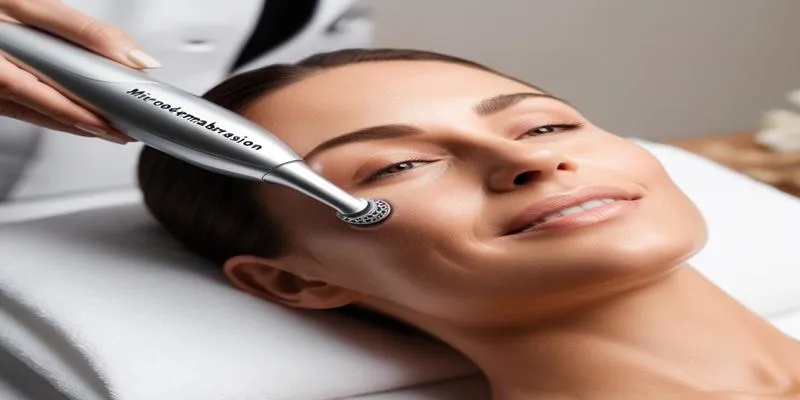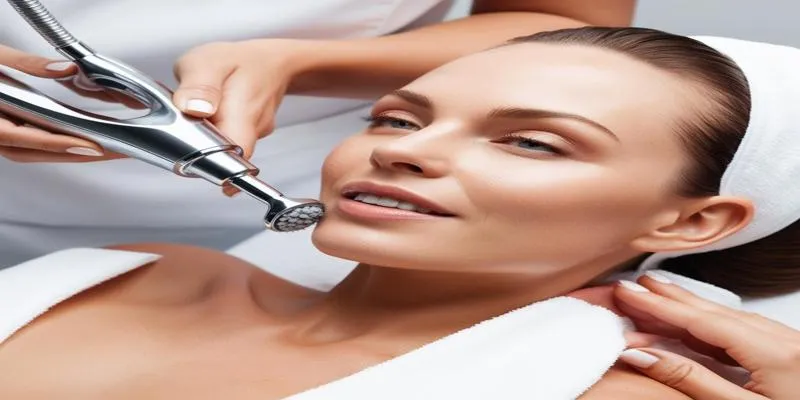Have you ever considered shaving your face? We're not talking about beards, but rather dermaplaning—the skincare method that's taken the beauty world by storm. This technique promises to exfoliate your skin by removing dead cells and peach fuzz, revealing a smoother and brighter complexion. But is it right for you? Before reaching for that razor, it's essential to understand the pros and cons of dermaplaning. Below, we've compiled the significant benefits and drawbacks to help you decide if this beauty treatment is worth adding to your skincare routine.
The Advantages of Dermaplaning: A Fresher Look
 Dermaplaning has become a popular facial skincare treatment, offering several benefits. Let's explore why this exfoliation technique might be worth considering for your skincare routine.
Dermaplaning has become a popular facial skincare treatment, offering several benefits. Let's explore why this exfoliation technique might be worth considering for your skincare routine.
Smoother Skin Texture
One of the key benefits of dermaplaning is the immediate improvement in skin texture. By gently removing dead skin cells and peach fuzz, you can achieve a smoother, brighter complexion. The resulting skin feels exceptionally soft, providing the perfect base for makeup application or a natural glow.
Enhanced Product Absorption
After dermaplaning, your skin becomes more receptive to skincare products. Without the outer layer of dead skin and fine hairs, serums, moisturizers, and other treatments can penetrate deeper, leading to better results from your skincare investments.
Brighter Complexion
Dermaplaning effectively removes the dull, lackluster layer of skin cells that can make your complexion appear tired and aged. By revealing fresh skin cells underneath, this treatment can significantly brighten your overall appearance, leaving you looking more youthful and luminous.
Pain-free Hair Removal
Unlike other hair removal methods that can be painful or irritating, dermaplaning is typically painless. This gentle exfoliating method removes vellus hairs (peach fuzz) without causing ingrown hairs or skin reactions, making it an excellent option for individuals with sensitive skin.
The Drawbacks of Dermaplaning
While dermaplaning offers numerous benefits, it's essential to consider the potential drawbacks before deciding if this facial treatment is right for you.
Skin Irritation and Sensitivity
Using a sharp blade on your skin can lead to irritation, especially for those with sensitive skin. After the procedure, some people experience redness, itching, or even a burning sensation. In rare cases, such irritation may last for days, affecting your daily routine.
Risk of Cuts and Infection
While generally safe when performed by a professional, dermaplaning carries a minimal risk of cuts or nicks. Minor cuts may become infected if proper aftercare is not taken. Ensure the tools are sterile and follow all post-treatment instructions carefully.
Temporary Results
One drawback of dermaplaning is that it's not a permanent hair removal solution. The results typically last for 3-4 weeks, after which you'll need to repeat the process to maintain smooth, hair-free skin. This can be time-consuming and costly, depending on whether you opt for professional treatments or at-home dermaplaning.
Misconceptions About Hair Regrowth
A common myth is that hair grows back thicker or darker after dermaplaning. While this isn't true, the blunted edge of shaved hairs may make regrowth appear coarser, which can be off-putting for those with naturally dark or thick facial hair.
Is Dermaplaning Suitable for Your Skin Type?
 Dermaplaning isn't suitable for everyone. Understanding your skin type is crucial to determine if this exfoliation method will work for you.
Dermaplaning isn't suitable for everyone. Understanding your skin type is crucial to determine if this exfoliation method will work for you.
Ideal Candidates for Dermaplaning
Dermaplaning works best for individuals with normal to dry skin types. It's an excellent option if you have dull skin or fine facial hair (peach fuzz) that you'd like removed. It can also benefit those with mild acne scars or uneven skin texture. However, people with oily or combination skin might also see benefits if performed by an expert.
When to be Cautious
While minimally invasive, there are certain skin conditions where caution is advised:
- Active Acne: Avoid dermaplaning during an active breakout; wait until your skin clears.
- Sensitive Skin: Conditions like Rosacea or Eczema may be aggravated by dermaplaning's scraping action.
- Thick, Dark Facial Hair: Dermaplaning is not advised for coarse hair, as it can result in a stubbled effect.
Consulting a Professional
Consult a dermatologist or licensed esthetician before trying dermaplaning. A professional can assess your skin type, discuss your skincare goals, and determine if dermaplaning is right for you. They may also recommend alternative treatments if dermaplaning isn't suitable for your skin type or concerns.
How to Incorporate Dermaplaning into Your Skincare Routine
Preparation and Timing
Pre-dermaplaning skincare preparation is crucial. Cleanse your face with a mild, non-irritating cleanser to remove dirt, oil, or makeup. Pat the skin dry with a clean towel. Consider dermaplaning every 3-4 weeks for optimal results, allowing your skin to regenerate between treatments.
The Dermaplaning Process
Hold your skin taut with one hand, and with the other, gently glide the dermaplaning tool across your face at a 45-degree angle. Use short, light, feathery strokes, always moving toward hair growth. Start on your cheeks and move down to the chin, then work up to your upper lip and forehead. Avoid sensitive areas around your eyes, active breakouts, or irritated skin.
Post-Treatment Care
After dermaplaning, your skin might feel sensitive, so applying a hydrating serum or moisturizer will help soothe and nourish the freshly exfoliated skin. Protect your skin from sun damage with a broad-spectrum sunscreen of at least SPF 30. For the following days, avoid harsh exfoliants or retinoids to prevent irritation.
Pairing with Your Current Routine
Dermaplaning can enhance the effectiveness of your skincare products by allowing them to penetrate deeper into your skin. Consider applying your strongest treatments, such as vitamin C serums or hyaluronic acid, right after dermaplaning. However, be prepared for sensitivity and introduce new products slowly. Remember that dermaplaning is a form of exfoliation, so adjust your routine to avoid over-exfoliating your skin.
Conclusion
When considering dermaplaning, weigh the potential benefits against the risks. Facial shaving can leave your skin feeling smoother and improve product absorption, but it may cause irritation for some and sometimes result in ingrown hairs. When done correctly and followed with proper aftercare, your skin can appear brighter and more radiant, making it a valuable addition to your skincare routine.